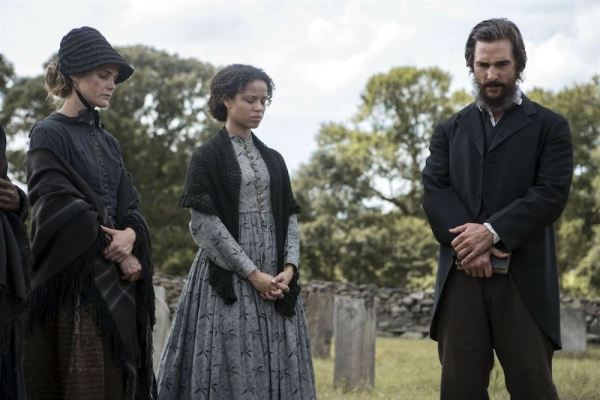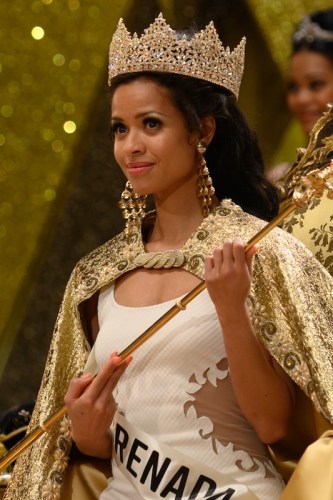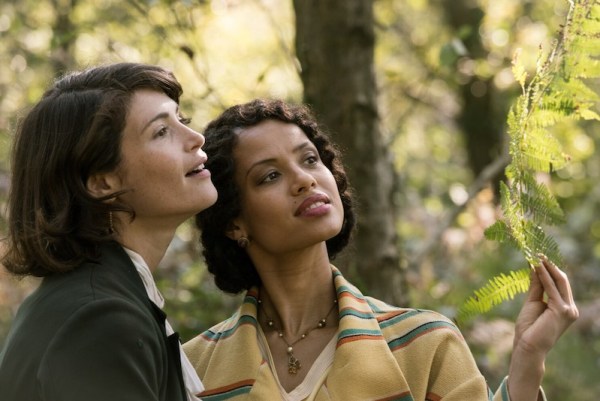
British actress Gugu Mbatha-Raw has done a number of period flicks, from one of her early roles as an 18th-century aristocratic woman in Belle to the upcoming biopic of British-Jamaican nursing pioneer Mary Seacole in Seacole. I thought that, and of course her talent and range, made her the perfect candidate for a Woman Crush Wednesday!
Marple: “Ordeal by Innocence” (2007)
One episode of the Agatha Christie, 1950s-set murder mystery series.


Belle (2013)
As Dido Elizabeth Belle, a real-life woman of color who was raised by her aristocratic English family and who was both inside and yet outside of that family.







Free State of Jones (2016)
Based on a true story, about Newton Knight, a Mississippi man who led an armed revolt against the Confederacy during the American Civil War. Mbatha-Raw plays the real-life Rachel, an enslaved woman who becomes his wife.


Beauty and the Beast (2017)
She plays Plumette, a maid who is transformed into a feather duster, in the live-action, 18th-century-ish adaptation.


Motherless Brooklyn (2019)
A crime movie set in 1957 New York. Mbatha-Raw plays an African-American woman fighting “urban renewal.” Things get more complicated!


Come Away (2020)
She plays the adult Alice (of Alice in Wonderland) in this homage to Peter Pan and Alice in Wonderland.



Misbehaviour (2020)
Technically a little late for us, but Mbatha-Raw is SO good in this I had to include it! She plays the real-life Miss Grenada who competed in the 1970 Miss World competition, while British feminists protest.



Summerland (2020)
A reclusive writer is forced to take in a refugee boy during World War II. In part of the story, she flashes back to her relationship with with Vera (Mbatha-Raw) while at university.



Seacole (coming soon)
She’ll be playing the real-life Mary Seacole, a British-Jamaican nurse during the Crimean War (1853-56).


Which of Gugu Mbatha-Raw’s historical roles is your fave?









Not boobs- oddly positioned hands in white gloves [thanks to my cataract surgery I can actually SEE this lol]
I was coming down to say the same thing; awkward capture of a moment when her hands are directly at boob-level, creating a strange optical illusion (presumably she’s pushing the cape off her shoulders or pulling it around her shoulders?)
The emphasized boobs photo, she’s holding her hands to her chest, kind of like she’s getting ready to shrug her cape off. The angle of the shot makes it look weird.
Thanks for the reminder that I must see “Come Away.”
I loved her in Belle. The clothing was dreamy in that film and it had a great story too. I did see the Christie performance as well. But now I have more to watch. Thank you for profiling this actress.
She’s too young and pretty for Mary Seacole, a forceful middle aged woman at the time of the Crimean War.
Gugu Mbatha-Raw is 39 (though she doesn’t look it) but you’re right in that she’s still 13 years younger than the real Mary Seacole was during the Crimean War.
Wow! I’m a lousy judge of age but she still looks like an ingenue to me!
She is AWESOME and SO BEAUTIFUL!!!! Belle is my favorite of her historical roles. She was also in the TV show Touch (not a FrockFlick) which was very good and unfortunately one or two seasons.
Belle is my favourite, too. I like her Plumette in B&B and disliked the costumes for Belle. Not period. I want to see Seacole.
Loved her in Belle- she is radiant and understated and real. Sarah Gadon is wonderful as her sister, too.
Dido Belle’s aristocratic family was Scottish not English and showed a praiseworthy sense of responsibility towards her in spite of her being illegitimate as well as black. The Murray’s peers were offended by Belle being treated like a member of the family but that didn’t stop her guardians from including her in social events. The Murrays did their best but Belle’s position was difficult both socially and legally in spite of their support and the money left to her.
Mary Seacole wasn’t actually a nurse in the Crimea, she ran a canteen for the troops and a restaurant for officers. She was present at some battles, with food and drink for soldiers and onlookers and she carried bandages so she probably provided some first aid but her real nursing seems to have been caring for cholera patients during epidemics in Kingston and Panama, which shows her courage.
Nursing as a formal profession wasn’t a thing until after the Crimean War (not really until the 20th c.), & much of what women did at battlefields, was generically termed “nursing.” Mary Seacole practiced traditional medicine in Jamaica so it’s as fair to call her a “nurse” as anyone else at the time.
That’s true. Just about every woman in the early nineteenth century learned something about medicine at their mother’s knee, as did Mrs. Seacole. But even she conceeded some of what she’d been taught was ineffective at best, dangerous at worst but in pure justice no more so than the practices of accredited physicians.
Florence Nightingale is famous for putting nursing on a professional basis.